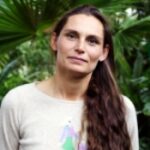Lien vers Pubmed [PMID] – 32623234
Lien DOI – S0955-0674(20)30069-710.1016/j.ceb.2020.05.006
Curr. Opin. Cell Biol. 2020 Jul; 66(): 79-88
Intermediate filaments (IFs), together with actin and microtubules, constitute the cytoskeleton and regulate essential biological processes including cell migration. Despite the well-described changes in the composition of IFs in migrating cells, the mechanism by which these changes may contribute to cell migration remains elusive. Recent studies show that IFs control cell migration by impacting the actomyosin machinery. This review discusses how the unique physical properties of IFs, the interplay between IFs and the actomyosin network, and the connection of IFs with cell adhesive structures participate in cell migration. We highlight the biochemical and mechanical mechanisms by which IFs control actomyosin-generated forces to influence migration speed and contribute to nuclear integrity and cell resilience to compressive forces in 2D, as well as in confined 3D migration.

